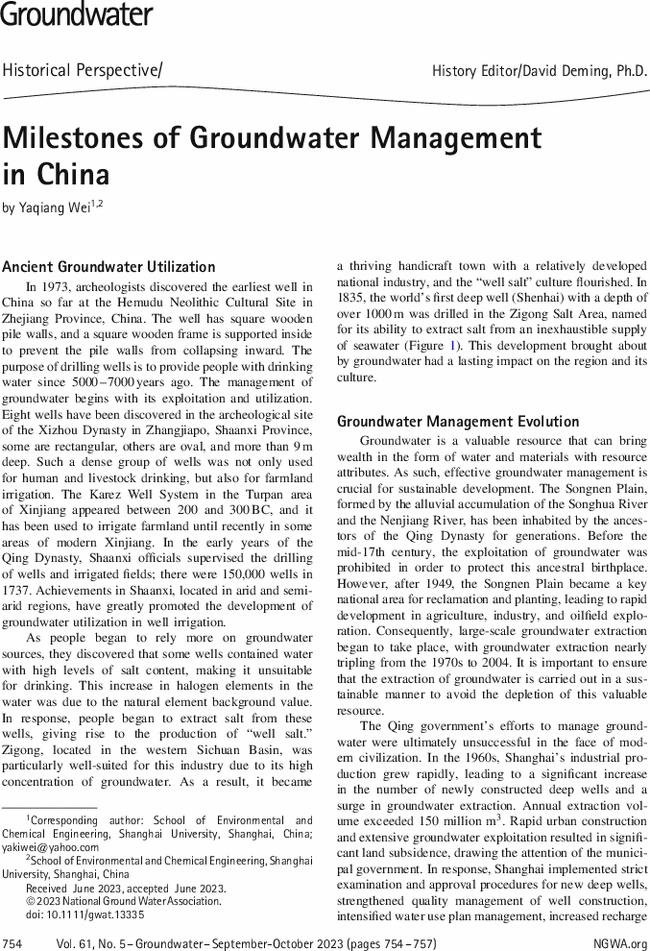Milestones of Groundwater Management in China
IF 2
4区 地球科学
Q3 GEOSCIENCES, MULTIDISCIPLINARY
引用次数: 0
Abstract
Ancient Groundwater Utilization In 1973, archeologists discovered the earliest well in China so far at the Hemudu Neolithic Cultural Site in Zhejiang Province, China. The well has square wooden pile walls, and a square wooden frame is supported inside to prevent the pile walls from collapsing inward. The purpose of drilling wells is to provide people with drinking water since 5000–7000 years ago. The management of groundwater begins with its exploitation and utilization. Eight wells have been discovered in the archeological site of the Xizhou Dynasty in Zhangjiapo, Shaanxi Province, some are rectangular, others are oval, and more than 9 m deep. Such a dense group of wells was not only used for human and livestock drinking, but also for farmland irrigation. The Karez Well System in the Turpan area of Xinjiang appeared between 200 and 300 BC, and it has been used to irrigate farmland until recently in some areas of modern Xinjiang. In the early years of the Qing Dynasty, Shaanxi officials supervised the drilling of wells and irrigated fields; there were 150,000 wells in 1737. Achievements in Shaanxi, located in arid and semiarid regions, have greatly promoted the development of groundwater utilization in well irrigation. As people began to rely more on groundwater sources, they discovered that some wells contained water with high levels of salt content, making it unsuitable for drinking. This increase in halogen elements in the water was due to the natural element background value. In response, people began to extract salt from these wells, giving rise to the production of “well salt.” Zigong, located in the western Sichuan Basin, was particularly well-suited for this industry due to its high concentration of groundwater. As a result, it became

中国地下水管理的里程碑
本文章由计算机程序翻译,如有差异,请以英文原文为准。
求助全文
约1分钟内获得全文
求助全文
来源期刊

Groundwater
环境科学-地球科学综合
CiteScore
4.80
自引率
3.80%
发文量
0
审稿时长
12-24 weeks
期刊介绍:
Ground Water is the leading international journal focused exclusively on ground water. Since 1963, Ground Water has published a dynamic mix of papers on topics related to ground water including ground water flow and well hydraulics, hydrogeochemistry and contaminant hydrogeology, application of geophysics, groundwater management and policy, and history of ground water hydrology. This is the journal you can count on to bring you the practical applications in ground water hydrology.
 求助内容:
求助内容: 应助结果提醒方式:
应助结果提醒方式:


